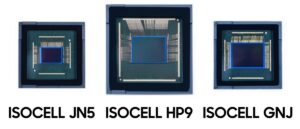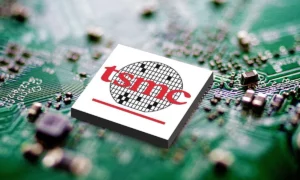Introduction:
Chip Design and fabrication is an exciting and challenging endeavor that allows you to bring your creative ideas to life. In this blog post, we will walk you through the process of designing and manufacturing a custom chip using the OpenROAD Project and the SkyWater Technology Foundry. This journey will require careful planning, dedication, and a passion for technology. Let’s dive in!
Step 1: Define Your Chip’s Purpose and Features
The first step in chip design is to clearly define its purpose and features. What do you want your chip to do? Are you designing a microcontroller, an AI accelerator, or something entirely unique? Consider the specific functionalities, performance requirements, and power constraints your chip should meet. This crucial step lays the foundation for the entire design process.
Example: Let’s say we want to design a low-power microcontroller for IoT applications. Our chip should include a CPU core, memory, GPIO pins, and a power management unit. We aim for low power consumption, high efficiency, and a compact form factor.
Step 2: Choose the Process Node for Chip design
The process node refers to the manufacturing technology that will be used to create your chip. The OpenROAD Project offers various process nodes, including 130nm, 90nm, and 65nm. Your choice of process node will impact factors like power efficiency, performance, and cost. Make an informed decision based on your chip’s requirements and your familiarity with the technology.
Example: For our IoT microcontroller, we’ll select the 130nm process node. This node strikes a balance between power efficiency and cost-effectiveness, making it suitable for battery-powered devices.
Read More: Become a VLSI Designer : Free Tools, without any Degre
Step 3: Get the Necessary Tools and Software for chip design
To design your chip, you’ll need access to specialized tools and software. The OpenROAD Project provides a range of free tools that streamline the chip design process. You’ll need the Process Design Kit (PDK) for your chosen process node, which is available from the SkyWater Technology Foundry. These tools and resources are essential for creating the physical layout of your chip.
- Visit the OpenROAD Project website for access to free chip design tools.
- Obtain the Process Design Kit (PDK) for the 130nm process node from the SkyWater Technology Foundry.
Step 4: Chip design
Designing a chip is a complex and time-consuming task. It involves creating a detailed layout of the chip’s components, connections, and layers. These are all encompassed in The OpenROAD Project- a tool that offers a user-friendly environment for chip design but require a steep learning curve. Expect to invest a significant amount of time in learning and experimentation as you bring your chip to life.
- Utilize the OpenROAD Project’s tools to create a detailed chip design. For our microcontroller, this involves designing the CPU core, memory layout, GPIO pins, and power management circuits.
- Expect a learning curve as you work with tools like Magic, Yosys, and OpenROAD. You may find tutorials and documentation on the OpenROAD Project website to be valuable.
Step 5: Submit Your Design to the Open MPW Program
The Open Multi-Project Wafer (MPW) Program is a fantastic opportunity that allows you to have your chip fabricated at the SkyWater Technology Foundry, all at no/low cost to you. The December 2023 deadline is the next opportunity.
- Visit the Open MPW Program website for information on submission deadlines and guidelines.
- Submit your chip design by the specified deadline, ensuring it adheres to design rules and constraints for the selected process node.
Step 6: Wait for Your Chip to be Fabricated
Exercising patience is paramount at this stage, as the chip fabrication process typically spans around six months. Throughout this duration, it is imperative to prepare diligently for the forthcoming testing and evaluation phases.
Step 7: Receive Your Chip and Test It
Once your chip has been fabricated, you’ll receive the physical devices. The final and most exciting step is testing your chip to ensure it functions correctly. This may involve running tests, debugging, and verifying that it meets the specifications you defined in Step 1.
Will this all be free
The process of designing and fabricating your own custom chip using the OpenROAD Project and the SkyWater Technology Foundry can involve both free and paid components. Furthermore, it’s important to understand the various cost aspects associated with this endeavor.
Here’s a breakdown:
Design Tools: The OpenROAD Project provides a set of free and open-source chip design tools, which you can use for designing your chip. These tools are freely available and open to the community, making them accessible at no cost.
Process Design Kit (PDK): You will need the Process Design Kit (PDK) specific to your chosen process node, which is provided by the SkyWater Technology Foundry. The availability and cost of PDKs may vary. In some cases, PDKs for older process nodes might be available for free or at a lower cost, while more advanced nodes may have associated fees.
Fabrication Costs: One of the key benefits of the OpenROAD Project is the opportunity to submit your chip design to the Open Multi-Project Wafer (MPW) Program, which allows you to share the cost of fabrication with other designers. This can significantly reduce the cost compared to fabricating a single chip. Nevertheless, it’s important to note that there may still be costs associated with MPW submissions. These costs can vary depending on factors such as chip size and complexity.
Testing and Evaluation: Once you receive your fabricated chips, there may be additional costs related to testing and evaluation, including the purchase of evaluation boards, test equipment, and software tools. These costs can vary widely depending on your specific project and requirements.
IIn summary, while there are many free and open resources available through the OpenROAD Project, there may still be some costs associated with the fabrication and testing phases of your custom chip project.
Consequently, it’s essential to research and budget for these costs accordingly. Furthermore, it’s worth noting that the availability of free resources and subsidized programs may change over time.
Therefore, it’s a good idea to check the latest information on the project websites and contact relevant organizations for the most up-to-date details on costs and opportunities.
Conclusion:
Designing and fabricating your own chip is a rewarding journey that requires careful planning, dedication, and access to the right resources. The OpenROAD Project, in collaboration with the SkyWater Technology Foundry, offers a remarkable opportunity for individuals and small teams to bring their chip designs to life. Embrace the challenge, learn from the process, and who knows—your custom chip could be the foundation for the next groundbreaking technology. Good luck!








